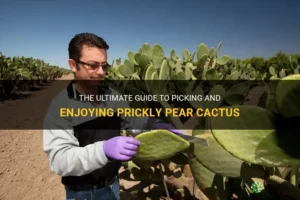Christmas Cactus Fertilizer Needs: Understanding What Your Christmas Cactus Needs to Thrive
Christmas Cactus, scientifically known as Schlumbergera, is not your average succulent. It brings a riot of colors—pinks, reds, and whites—during the winter months when many other plants lie dormant. However, to ensure that this captivating plant continues to flourish and exhibit its delightful blooms year after year, proper nourishment through fertilization is essential. Just as a chef selects the finest ingredients to create a magnificent dish, understanding the nutrition that your Christmas Cactus needs is crucial in nurturing its growth.
Embarking on the journey of caring for a Christmas Cactus begins with comprehending its unique requirements, particularly concerning fertilizer. Consider this article your guide, illuminating the path towards a flourishing plant that will be the centerpiece of your holiday celebrations.
Unveiling the Nutritional Palette
In the realm of plant care, the soil can be likened to a canvas, and the fertilizer serves as the paint that brings vibrant life to the artwork. For a Christmas Cactus, the ideal fertilizer offers a balanced composition of macronutrients—namely nitrogen (N), phosphorus (P), and potassium (K)—often referred to as N-P-K ratios. A well-thought-out 20-20-20 liquid fertilizer is a favored choice among enthusiasts, ensuring that the plant receives equal portions of these essential nutrients.
Like a carefully balanced diet for humans, the right fertilizer leads to robust growth. Nitrogen contributes to lush greenery, stimulating healthy foliage that supports the plant’s vibrant display. Phosphorus fuels a plethora of blooms, aiding in flowering and root development. Lastly, potassium acts as a champion of resilience, bolstering the plant against pests and diseases.
Timing is Everything: When to Fertilize
Consider the seasons as the musical score to which your Christmas Cactus dances. Timing the application of fertilizer is tantamount to keeping rhythm within this melodious cycle. Enthusiasts often recommend the application of fertilizer during active growth phases, typically from early spring to late summer. During these warmer months, when the days grow longer, the cactus thrives on the extra nourishment, akin to a child growing rapidly during summer vacation.
However, just as winter heralds a time of retreat and reflection, your Christmas Cactus requires a break from fertilization during its dormancy period in late autumn and winter. This pause not only prevents nutrient buildup in the soil but also prepares the plant for its spectacular bloom during the holiday season. Fertilizing just before the flowering period, usually in early November, can encourage bountiful blossoms that bring cheer to your home.
How to Apply Fertilizer: The Art of Application
Fertilization can be viewed as an art form, where the method of application significantly influences the effectiveness of the nutrients. Dilution is key; always mix the fertilizer with water according to the manufacturer’s instructions. A common practice is to apply the diluted solution every two to four weeks during the growing season. This not only ensures an even distribution of nutrients but also prevents potential fertilizer burn, a condition that can arise from concentrated applications.
A gentle yet thorough application ensures that the soil absorbs the essential elements without overwhelming the roots. Visually monitor the plant’s growth—a gradual response is expected. If the foliage appears vibrant and lush, and flowers are more plentiful, the fertilization regimen is effectively nourishing your beloved cactus.
Signs your Christmas Cactus Needs Assistance
Even a well-loved Christmas Cactus may encounter hurdles. Recognizing the signs that it is not thriving is pivotal in providing timely assistance. Yellowing leaves often indicate over-fertilization or nutrient deficiencies, a signal that adjustments must be made. In contrast, leggy growth may suggest a thirst for nutrients, calling for a boost in fertilization.
Additionally, the cactus’s flowering response is a direct reflection of its health. Sparse blooms or a lack of flowers suggests that adjustments in fertilization schedules or formulations may be necessary. Being attuned to the plant’s signs creates a nurturing relationship that enables it to thrive within your living space.
Conclusion: A Flourishing Winter Wonder
To cultivate a Christmas Cactus that flourishes and enchants during winter is to engage in a delicate dance of care and attention. By understanding the fertilization needs of this unique plant, one can unlock its potential for vibrant displays of color.
Approaching its care with thoughtful consideration—selecting the right nutrients, timing the application, and observing its responses—will ensure that your Christmas Cactus stands as a jubilant testament to the beauty of nature, even amidst the coldest months. With the right care, your Christmas Cactus will not only survive but thrive, filling your home with warmth, color, and the spirit of the season.




Leave a Comment